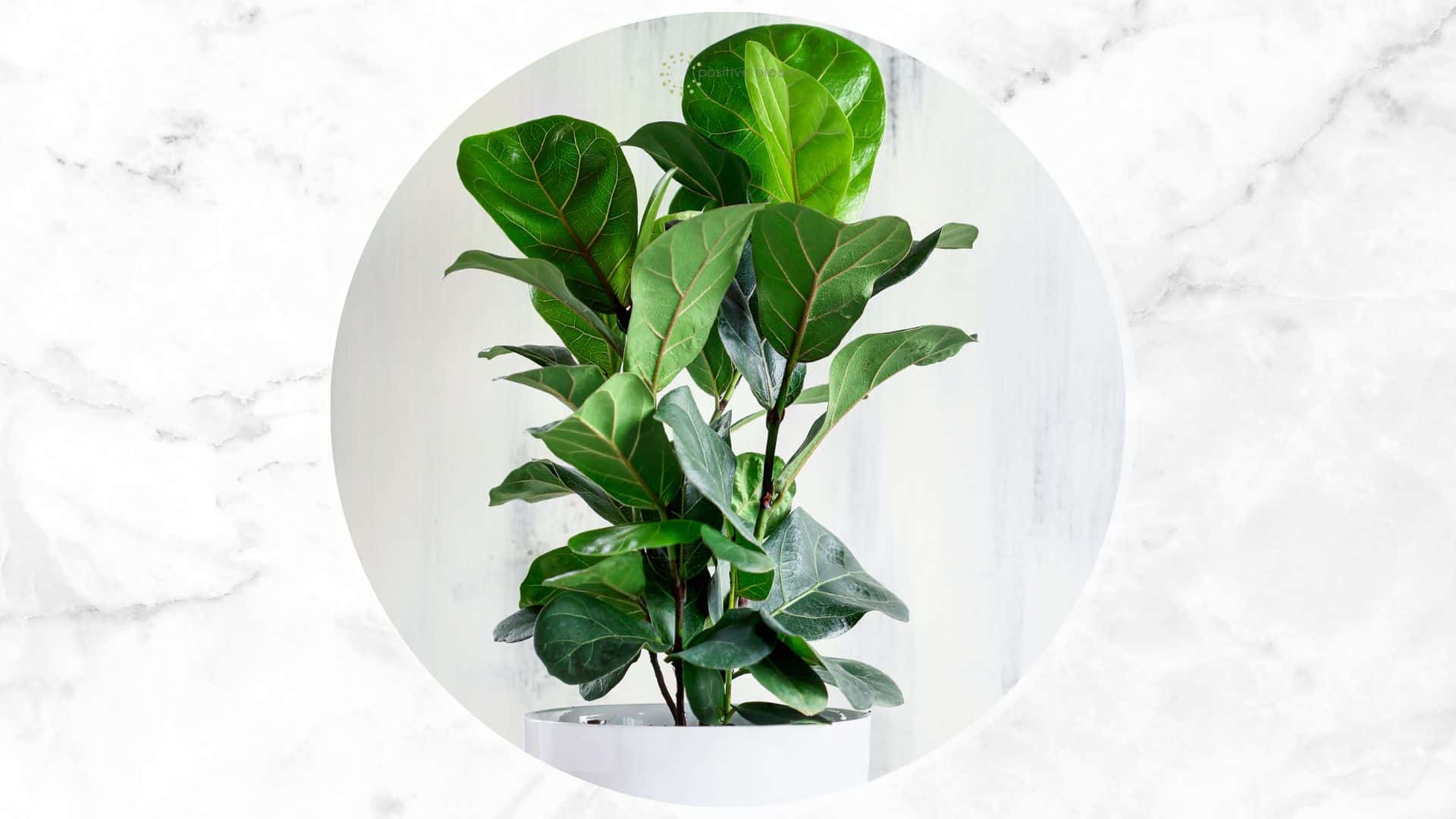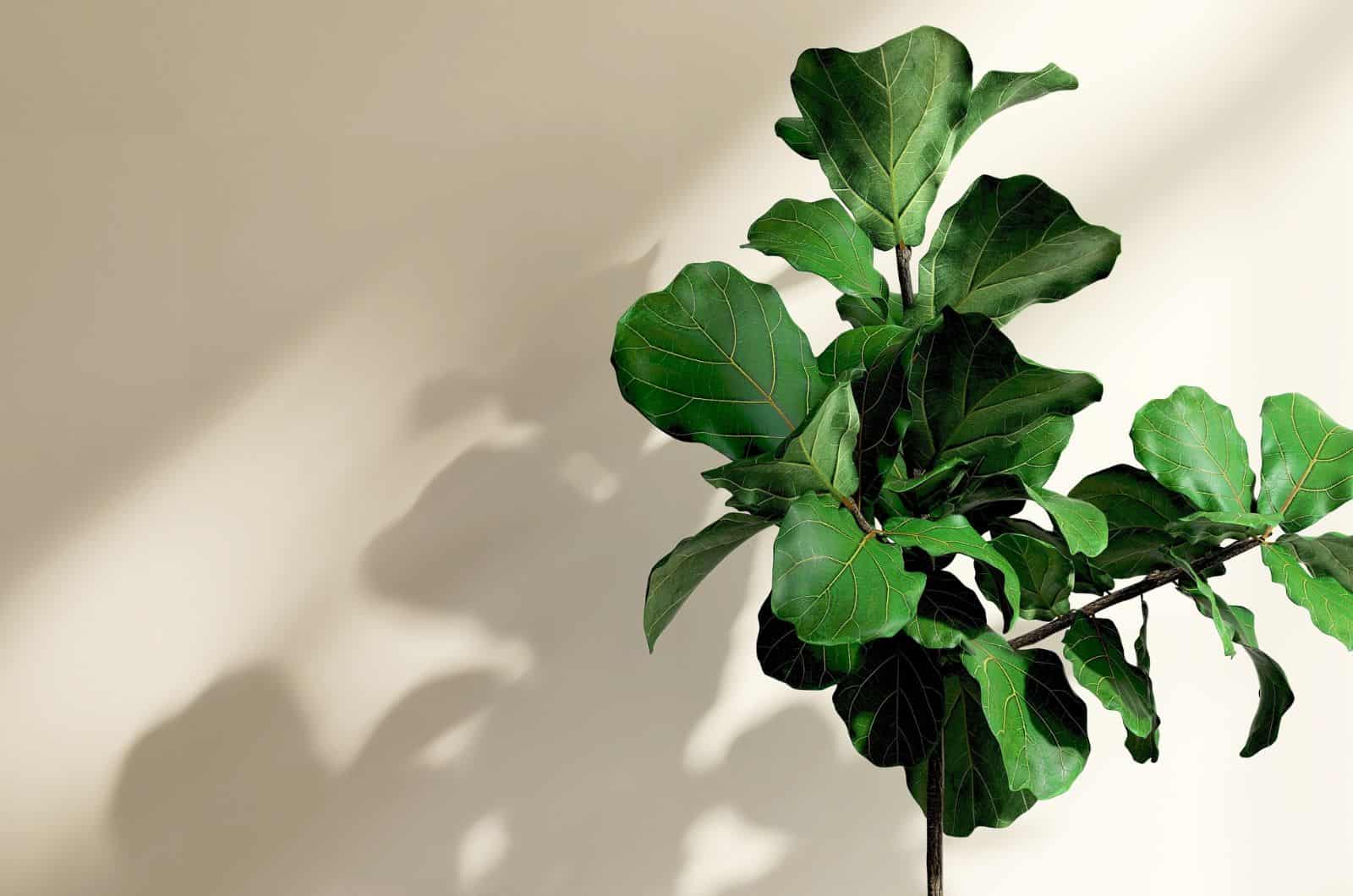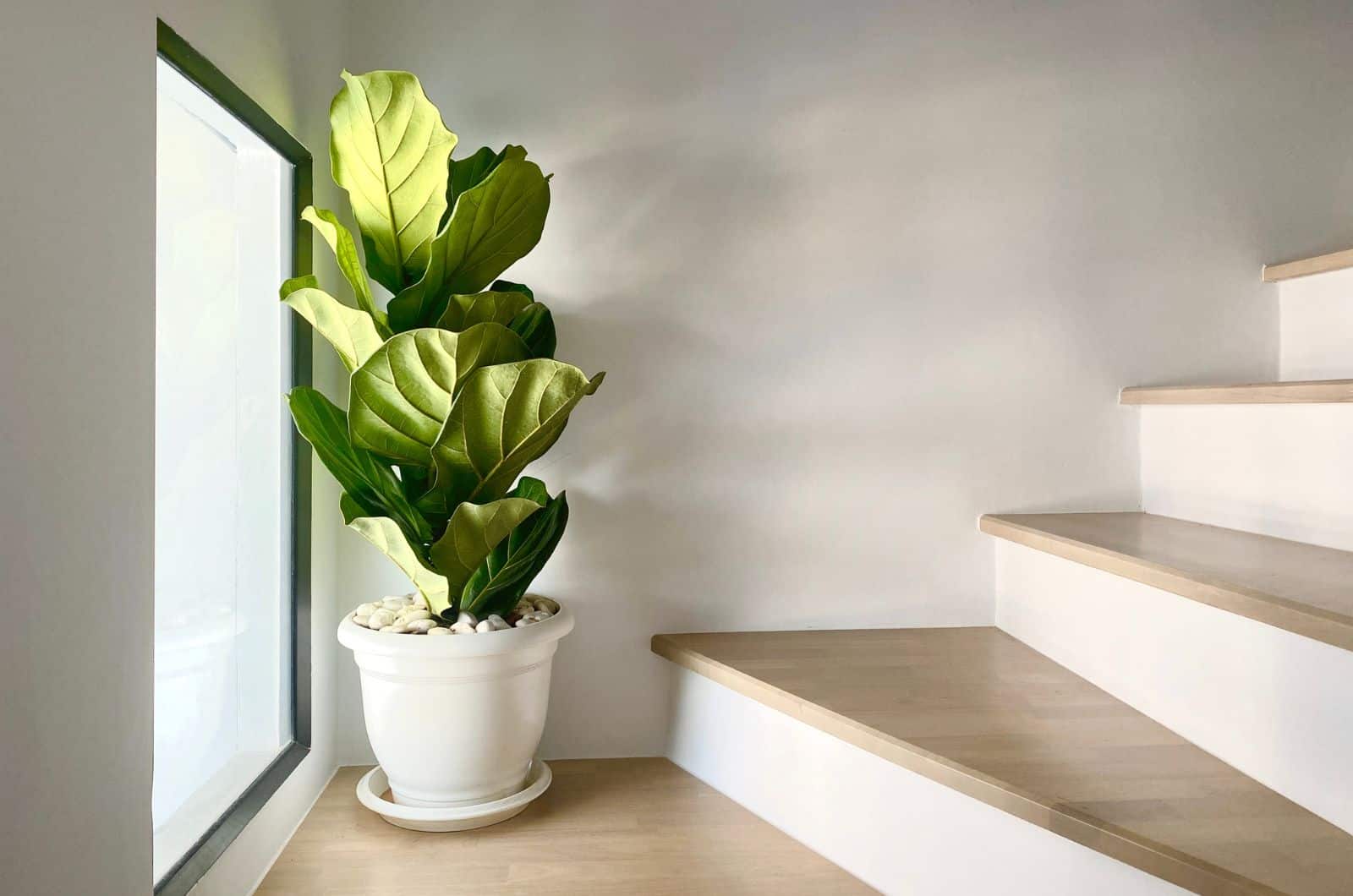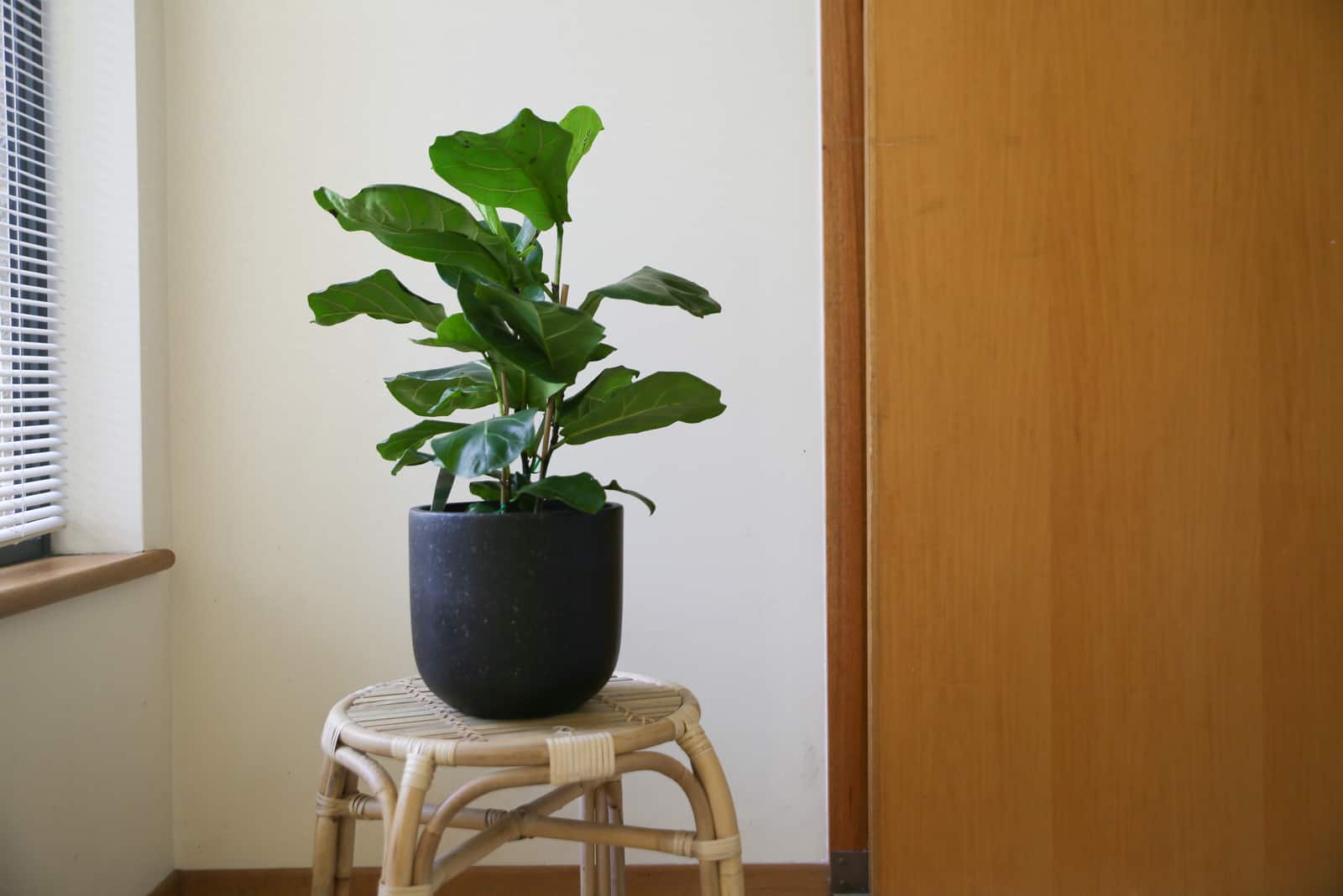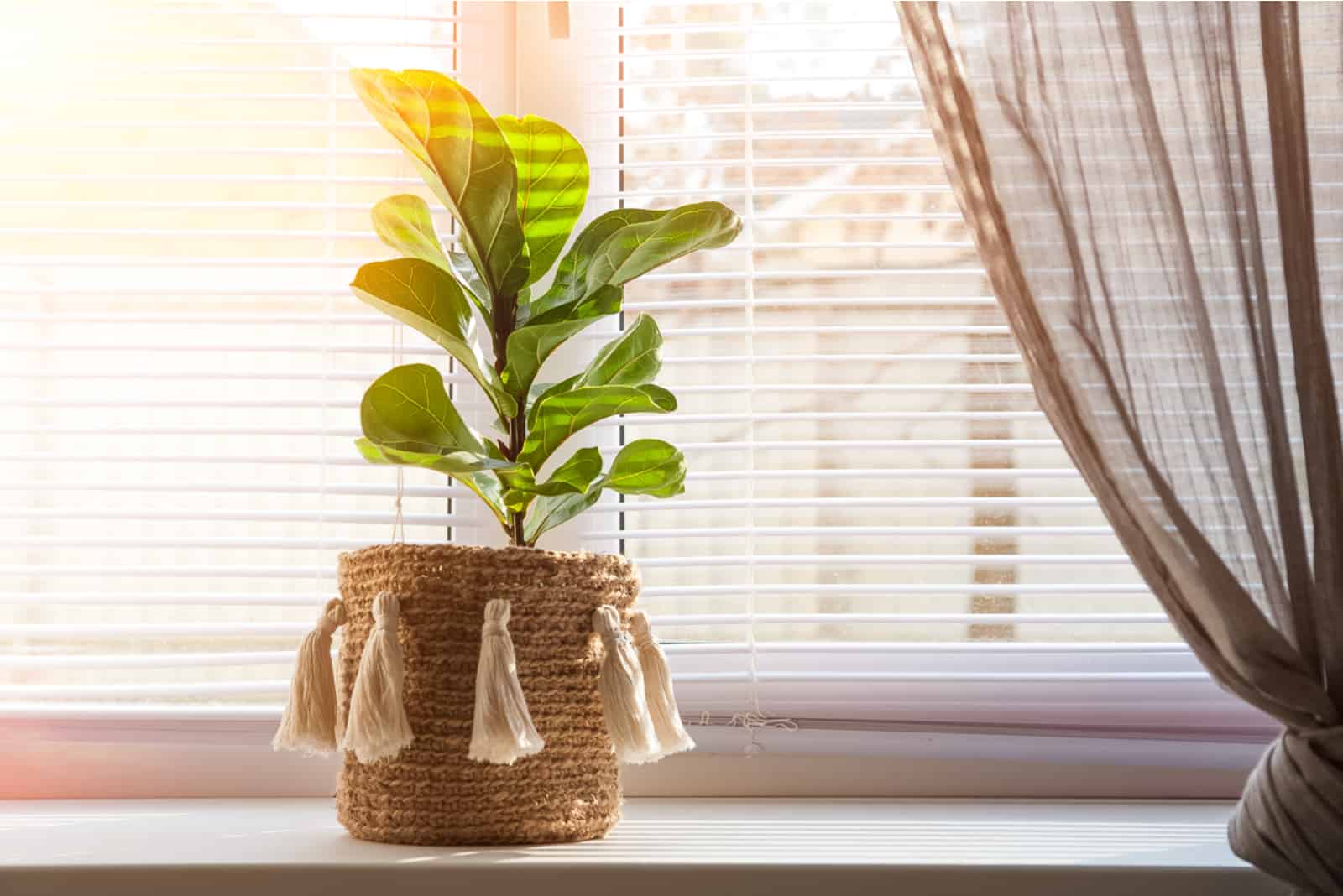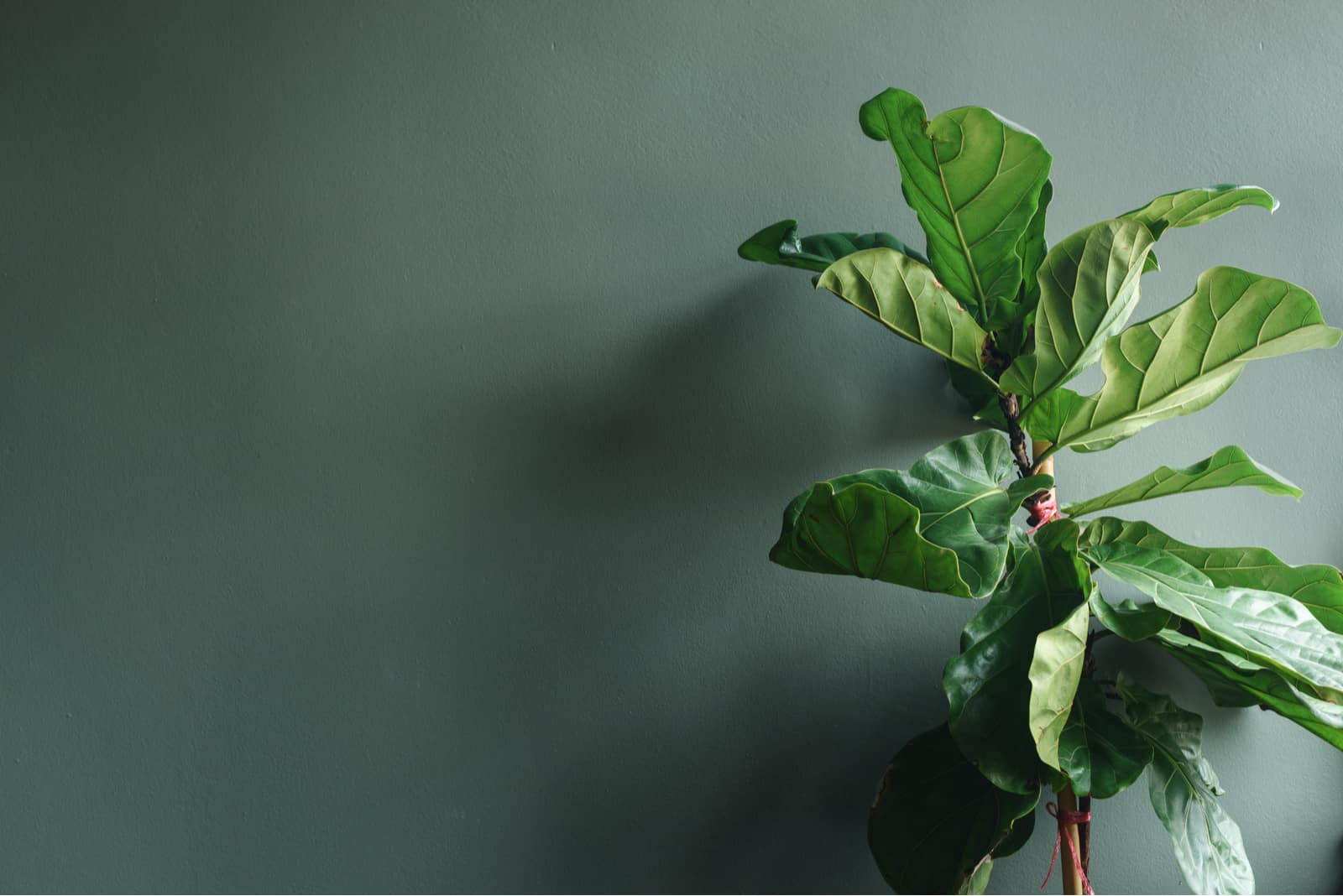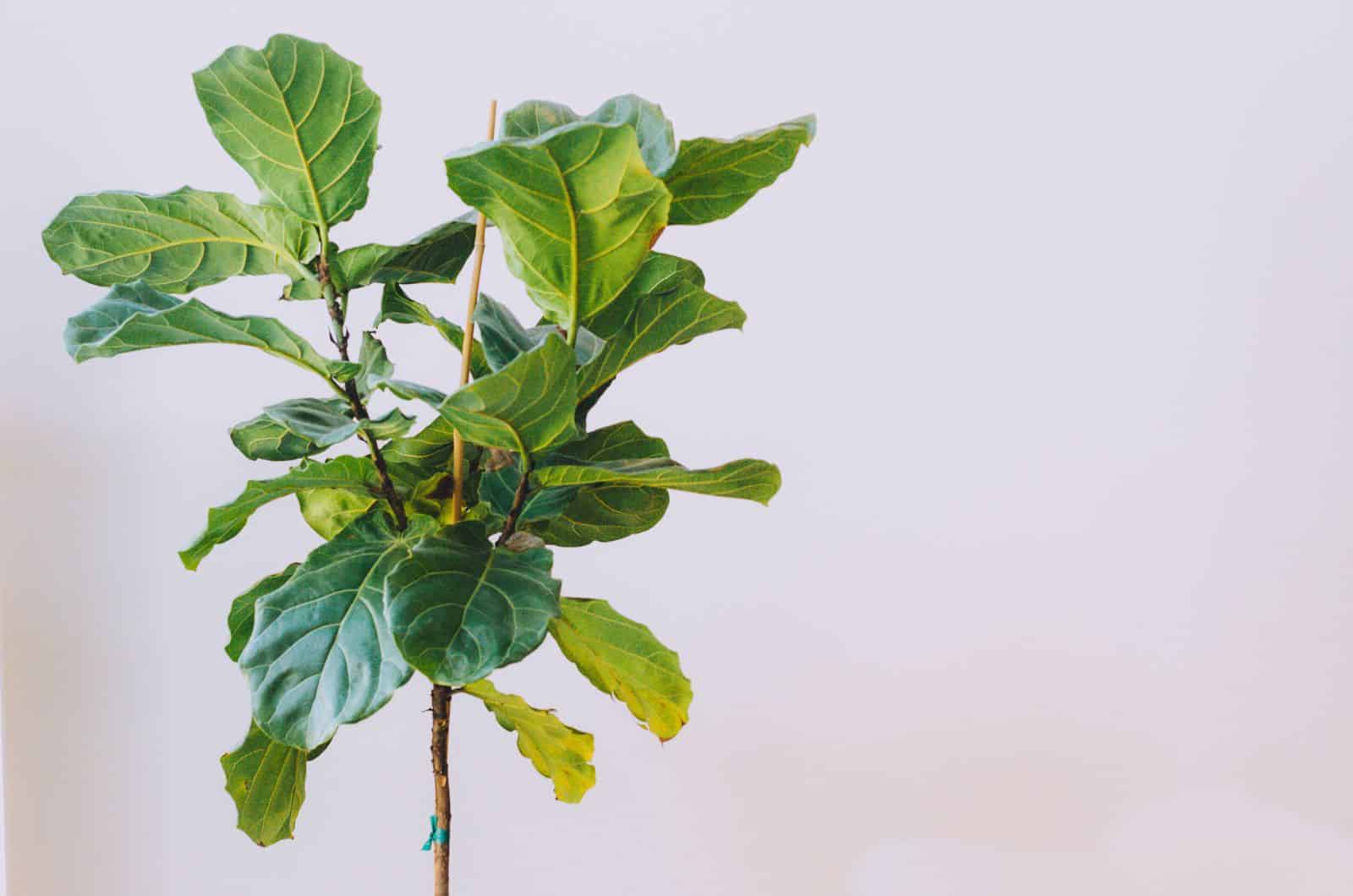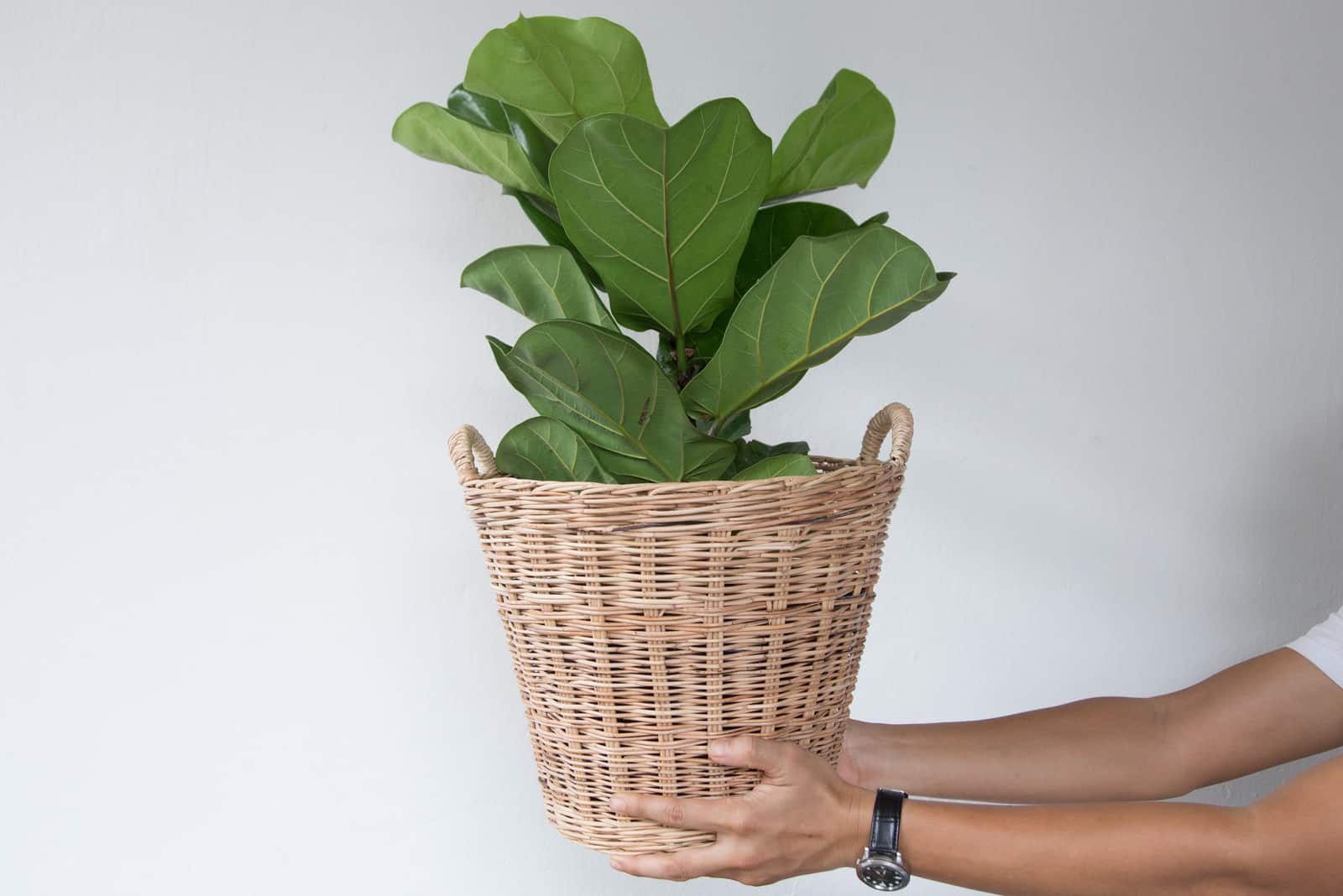I’ve been a proud Fiddle leaf fig plant parent for 10 years, and I must tell you that growing it has been such a pleasure.
These plants typically reach 10 feet tall when cultivated indoors, and the massive violin-shaped leaves leave no one indifferent.
In this article, I’ll discuss the many Fiddle leaf fig benefits, and I’m sure you’ll want to add it to your wishlist after you’ve read the article.
For those who already have Ficus lyrata plants, you’ll love it even more!
Let’s get started!
Fiddle Leaf Fig Benefits
What’s so special about the Fiddle leaf fig? There isn’t just one answer to this question. The benefits of this fantastic plant include aesthetic value, air purifying properties, therapeutic value, low maintenance features, and many more.
Let’s get into details!
Adds Aesthetic Value
When compared to other massive houseplants, the Fiddle leaf fig is definitely one of the most beautiful.
Deeply veined and lustrous foliage perfectly combines with any decor trend. This plant makes the ideal focal point in any room, especially if cultivated in floor-standing large pots.
If given enough space, the roots will spread and the FLF will reach at least 6 feet in height.
If you don’t have enough space for a 10 foot tall variety, then you can grow the smaller ones, such as the Ficus lyrata Bambino. This dwarf variety won’t exceed 3 feet, but will add as much beauty as its giant cousins.
Purifies The Air
NASA’s Clean Air Study listed rubber plants (Ficus elastica and Ficus benjamina) as air purifiers. Since the Fiddle leaf fig shares the same features with its cousins, it can be concluded that the FLF is also an air-purifying plant.
Indoor air may possess invisible compounds that we commonly refer to as VOC (Volatile Organic Compounds).
These threats are posed by everyday items in our homes, like preservatives, insect repellents, decor items, and furniture.
Too much exposure to VOCs may raise our risk of developing ailments including respiratory issues or cancer.
Ficus plants are extremely powerful at removing hazardous substances like acetone and toluene. Toluene overexposure can cause serious complications, such as liver and kidney damage, weariness, disorientation, and insomnia.
Other plants that produce a lot of oxygen include snake plants, jade plants, pothos, aloes, and spider plants.
Therapeutic Value
Are you familiar with horticultural therapy? When it comes to this type of therapy, the focus is on the garden and helping people to ‘heal’ their specific health issues and focus on specific goals they want to attain by performing gardening activities.
One of the first benefits of this type of therapy is improving physical health. For instance, while trimming or repotting your Fiddle leaf fig, you are strengthening your muscles.
During the therapy, which is led by experts, you use the correct ways of performing these activities, which results in improving mobility
Mental health is also enhanced through a sense of fulfillment and accomplishment.
You even get the chance to interact with others, which results in minimizing emotions of exclusion or loneliness.
When you tend your FLF, you are in contact with nature, and that’s definitely one of the best things you can do.
Easy To Maintain
You may have heard that Banjo figs can be fussy over growing conditions, so how are they easy to maintain?!
For experienced plant growers, caring for Ficus plants is a piece of cake. For beginners, the story is a little bit different. Once you figure out the watering schedule and ensure enough light, these plants become really easy to maintain.
If you plant/repot your FLF in a free-draining substrate and put it near a sunny window, you are two steps closer to a perfect environment for your plant. Insufficient light levels can cause serious issues with your Ficus lyrata plant.
Pay attention to the humidity around your plant because it should be above 30%. Only water when the growing substrate dries out two inches below the surface. If your Fiddle leaf fig is overwatered, the roots quickly rot, which may have lethal consequences for your plant.
Grows Rapidly
One of the best things about the FLF is that it grows very, very fast. I mean, you can expect your Fiddle leaf fig to grow at least one foot during only one growing season.
You can boost Fiddle leaf fig growth by applying fertilizer during the growing season. There are special fertilizers on the market designed specifically for FLF plants.
Some growers don’t want their FLF to reach a mature size in a short period of time. You can slow down the growth by reducing fertilizer frequency and pruning your FLF to control growth.
Great Feng Shui Plant
Feng Shui has become really popular, and if you’re into this kind of art, you need to know how the Fiddle leaf fig fits in it.
Due to its massive, glossy green foliage, the FLF plant will bring fortune and luck into your household.
The trunks of the Ficus plants are thin and smooth, and according to Feng Shui, they represent grace and elegance. They will also inspire continual progress of household members.
Feng Shui experts advise growing Fiddle leaf fig plants in households where family turmoil or other concerns are present. It will urge family members to collaborate and give more thought to the energy of the household.
Ficus lyrata positioning is more important than you might imagine. While correct Feng Shui consideration maximizes its energy, practical considerations limit where you can properly put a potted plant this large.
The best idea would be to find a place in your home with northern or southern exposure.
The north section of the Bagua represents the apartment’s career center, so placing a large and healthy plant will boost your growth and development.
If you would like to attract wealth into your home, then the southeastern part is more suitable. It’s associated with money and investment, not only with revenue.
I have to mention that your FLF must be healthy if used for Feng Shui. I mean, you should keep your plant healthy all the time, but don’t use it for Feng Shui until you know everything is fine.
If your Fiddle leaf fig leaves are curling, drooping, or wilting, or there are any other issues with the plant, fix them before thinking about Feng Shui.
Easy To Propagate
The mature FLF can be pretty pricey, mainly because of its size. The cuttings, on the other hand, aren’t expensive compared to other plants.
But if you don’t want to spend any money, you can get a new FLF in a simple way. You’ll enrich your plant collection, and I’m sure some of your plant-loving friends would be delighted if they got a FLF fig for their birthday!
Propagating these plants is easy, and even beginners don’t face many problems.
The best way to multiply Ficus lyrata plants is by using the stem cuttings propagation method. You can either start fig tree cuttings in water or plant them directly in the growing substrate.
Just select a healthy branch on your FLF and take a 6-7 inch long cutting using sanitized heavy-duty shears.
The branch(es) should have at least two nodes because the roots will develop from these plant parts. If the FLF cutting doesn’t have nodes, it can’t produce roots.
Fill a transparent container with fresh, room temperature water, and put the FLF cutting in it. If your cutting has only two nodes, make sure that one is below and one is above the water line. Change the water 2-3 times a week, and you can expect new roots in about a month.
Put a layer of growing substrate in the container and place the FLF cutting in the middle. Add more substrate, and you’ll know you’re finished once the entire root system is covered with soil.
Enhances Indoor Acoustics
I’m sure you’ll agree when I tell you that noise can be very irritating and distracting, even to good-natured and calm people.
If you live in a building made of hard surfaces, noise is refracted, which makes things worse.
Some plants, including the FLF species, can decrease sound levels. As a result, using plants to minimize noise is a low-cost option that allows us to create a pleasant environment in which to live, work, and reside.
The larger the plant’s leaves, the better effect. Therefore, the FLF plant is one of the best for this purpose due to the size of the leaves.
FAQs
Are Fiddle leaf figs toxic to touch?
Ficus plants, including the lyrata and benjamina species, are toxic to humans and pets. The most common consequences of FLF ingestion are skin irritation and gastrointestinal issues.
Poisoning typically occurs after the consumption of large quantities of plant parts, but you shouldn’t risk it; seek help if you notice your child or pet has consumed the plant. I highly recommend placing a Fiddle leaf fig where small children or pets can’t reach it. Since adult FLFs are massive and typically grown in floor-standing pots, look for other types of protection.
Is the Fiddle leaf fig good for the bedroom?
Yes, the Ficus lyrata, aka Fiddle leaf fig, makes an excellent bedroom plant because it has air-purifying properties. You need to be careful about the light level if you put your FLF in the bedroom; the plant needs bright indirect sunlight.
Wrapping Up
When you enter the plant world, you aren’t always aware of how many benefits plants actually have. Many people buy plants only because of their appearance, but plants have so much more to offer.
The Ficus lyrata is a perfect example of this. Fiddle leaf fig benefits include aesthetic value, therapeutic value, fast growth rate, and low maintenance. Additionally, these plants purify the air, enhance indoor acoustics, and make fantastic Feng Shui plants.
The one and only drawback of this plant species is its toxic feature. But if you’re careful enough and pay attention to placement and protection, there’s no reason why not to add an FLF to your plant collection.
Until next time!

